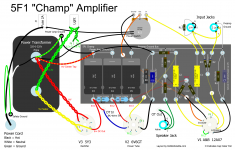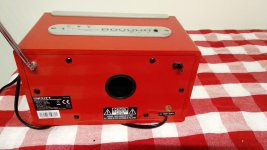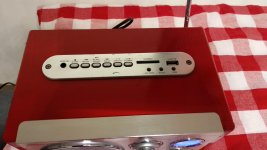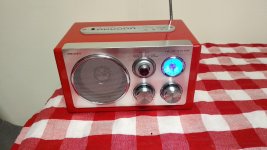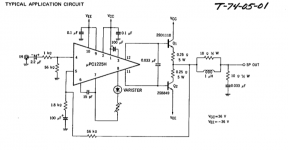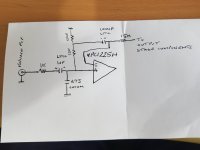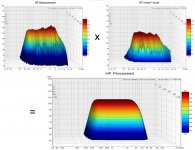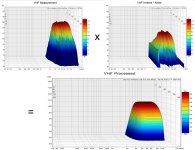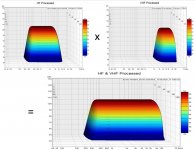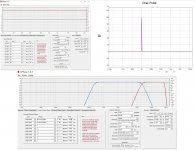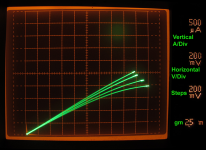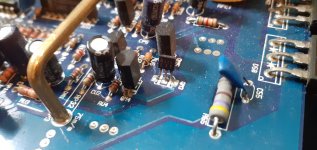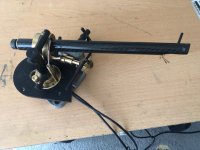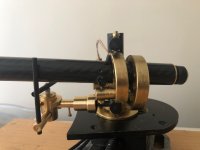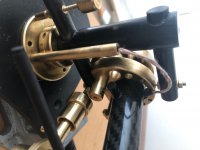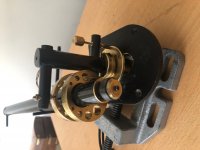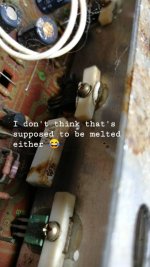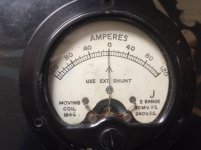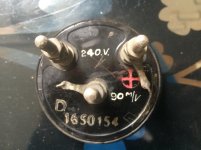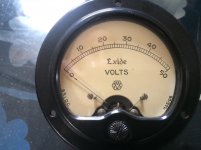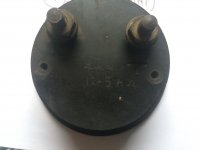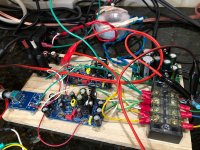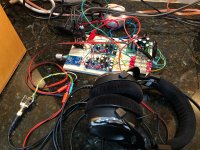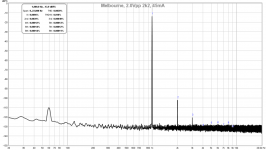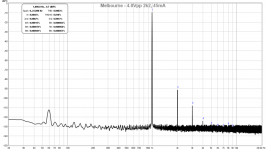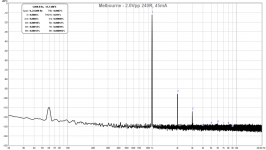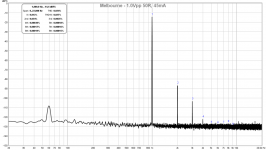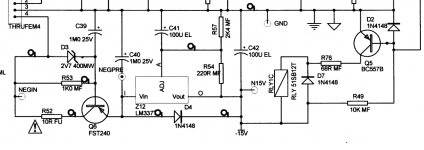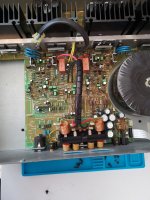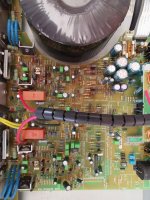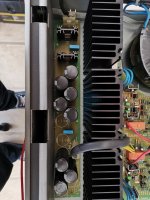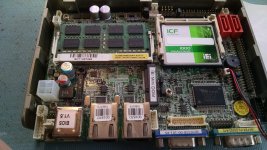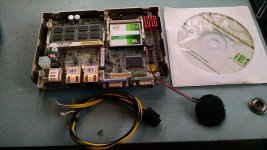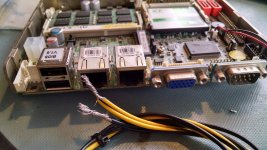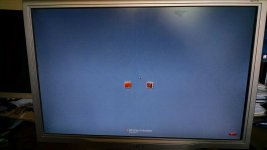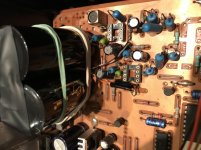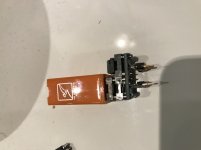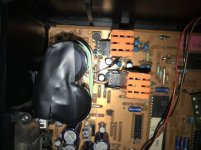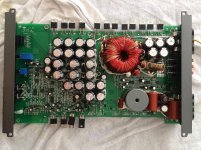This amp is a spin-off of the
Aksa Lender pre-amp, but now modified for DC-coupled output capability plus a revised mu-follower output stage for improved distortion performance. The Melbourne name was given as a designation for use with the
Mark Johnson Pass M2X amplifier, where there are modular input stages named after cities of their origin (Mountain View, Tucson, Austin, Ishikawa, etc). As this input stage would be using Hugh Dean's Aksa-Lender topology, it seemed natural to name it The Melbourne. My goal was to make a modular self-contained input stage for folks who have the M2X amplifier to be able to try out this topology. The Aksa Lender preamp was a single rail design (+48vdc), but to use on the M2X required a dual rail (+/-24vdc) supply. So I redesigned it on LTSpice to be dual rail, and in the process, made a few modifications for improved performance, plus the ability to use the M2X's native power supplies (which, may not be the usual ultra-low ripple supplies that I normally specify for a SE Class A amp, and assuming it comes from a typical linear trafo with a CRC with circa tens of mV of ripple. As I was refining the design on LTSpice, Paul Bysouth gave a suggestion to use a mu-follower on the output. A mu-follower takes for example, the 39R source resistor from the CCS device (DN2540) and splits it in a 1:2 ratio with 12R:27R resistors and placing the output node in between the two resistors and the CCS gate feedback after the bottom resistor. This proved to be quite effective at reducing the THD by about 4x - a significant improvement. This allowed the pre-amp stage to easily drive 600ohm load requirement that is the Edcor auto-former load on the M2X. In doing this, I played around with putting lower impedance loads on the pre-amp. For fun, I connected my DT880-250's to the output and listened. First thing to notice was an absolutely quiet background, no hiss or hum even with volume up but source off. When I applied music source, I was shocked how good it sounded. Natural, dynamic, clean and no fatigue. I expected high distortion since the 250ohm load presented was much higher than the simulated 600ohm design load. The bias current is running at only 45mA and voltage rails for the flat wooden board mockup was only +/15.5v provided through a
Mark Johnson designed BJT cap multiplier (layout by Prasi), and power from an Antek 25w 15v toroidal transformer (what I had on hand).
Here is the schematic on LTspice (ignore the series resistor on PSU rails - will be replaced with CRCRC):
Here is the schematic after JPS64 laid it out:
Here is a photo of the finished Melbourne module:
Note that there is also an SMT based layout with TH caps, although I have not built and verified that version yet:
Here is a photo of the module in the mockup amp with cap multiplier, input and output RCA's and volume pot (10kohm Alps RK09 series). Careful attention to star grounding (note green wires) with star hub located at the (10R/diode bridge/100nF) ground loop breaker connected to earth ground:
Here is a photo of the setup getting a first listen with headphones:
Here is a photo of the testing setup with alligator clips attached to the RCA jack outs for the headphone outputs:
Here are some initial measurements 2Vpp into 2k2 ohm load:
4Vpp into 2k2 ohm load:
2Vpp into 240R load (representative of DT880-250's):
4Vpp into 240R load:
And even with only 45mA bias current, if one plays at reasonable volumes into 50R load, this is what you get for 1Vpp:
And here is a more typical normal listening level for 1Vpp into 50R load:
As you can see, the harmonic profile is always classic SE Class A with 2nd order dominant harmonic and decreasing 3rd order and higher harmonics. With a ratio of -17dB for H3/H2, the sound is very euphonic and the right balance of sweetness and articulation, and the absence of higher orders makes it non-fatiguing to listen to.
I would like to acknowledge the help and inspiration of fellow DIY'ers AKSA, JPS64, Mark Johnson, Prasi, and Paul Bysouth for this design. Without your help, passion, and energy, this would not be possible. Thank you!
Update Aug 6, 2019: yourownbuzz made a nice headphone amp with Thai:

